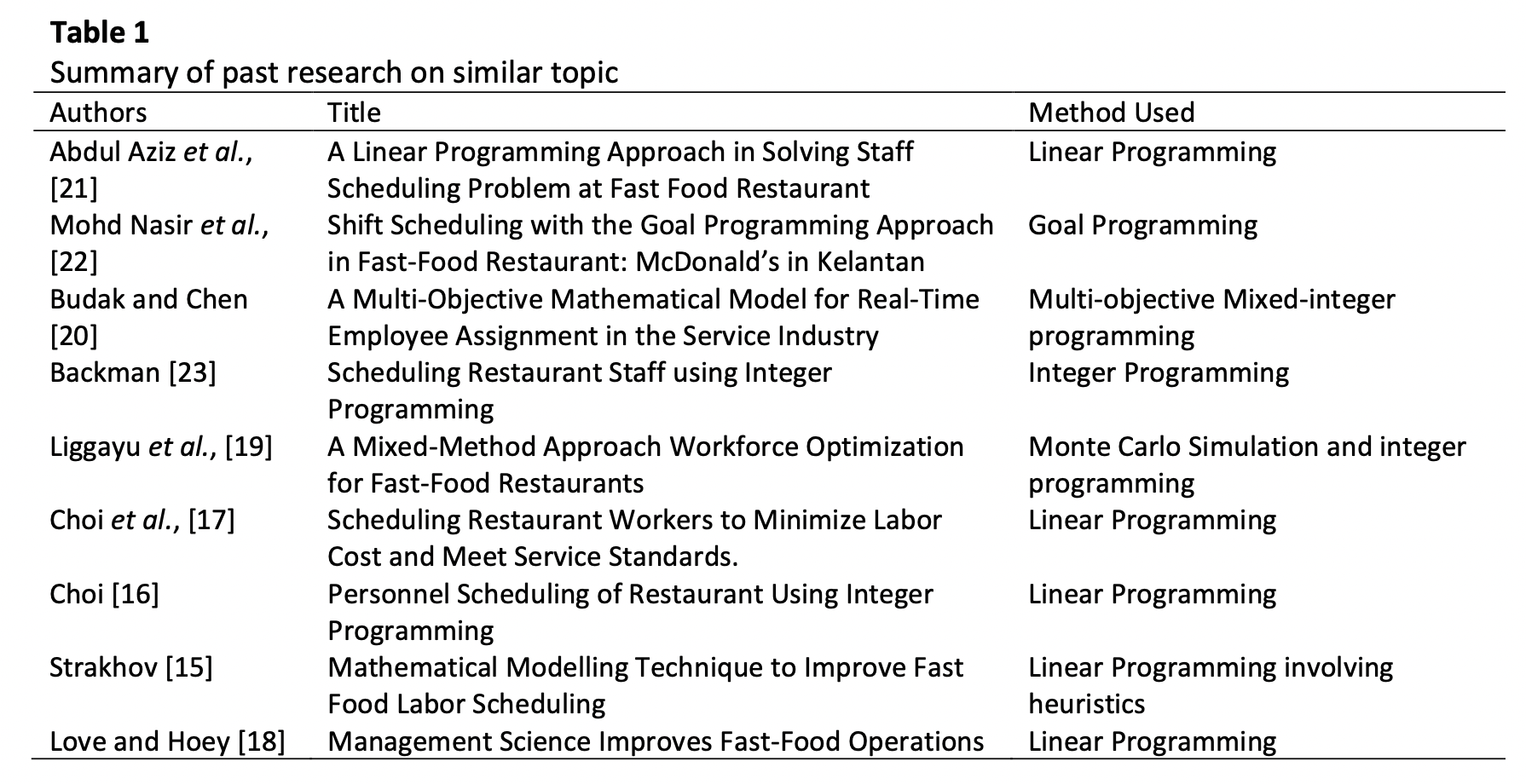A Binary Integer Programming Model for Personnel Scheduling: A Case Study at Fast-Food Restaurant in Johor
DOI:
https://doi.org/10.37934/araset.30.3.334347Keywords:
Personnel scheduling, binary integer programming, break period, fast-food restaurant, mathematical modelAbstract
This study is about analysing the current practice of the personnel scheduling at a well-known fast-food restaurant, as the post-pandemic situation slightly change their operating system. Therefore, the personnel scheduling needs to be modified according to the real-time situation using the binary integer programming (BIP) model. Based on the observation made, the problem of the study is to modify the working schedule with a proper break time for each staff to give them a fair working time, keep the workstations occupied during their operating hours and to maintain the restaurant as a healthy workplace. Therefore, after a background study on the topic and data collection made from a fast-food restaurant done, a one-day schedule is prepared to determine the number of staffs working in a day and scheduled the staff’s break period. A new schedule is obtained that meets all constraint’s requirements by solving the model using Microsoft Excel Solver. The new schedule minimized the number of staffs working in a day to 11 staff as compared to 12 staff in the current schedule. In conclusion, the proposed mathematical model can serve a fast and accurate solution for minimizing the personnel size and helps each staff to have a reasonable working hour with sufficient break time.
Downloads


























